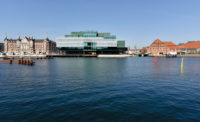Tokyo does not have one of those iconic skylines—towers with striking forms or distinctive crowns do not emerge from the water the way they do in cities like New York and Hong Kong. Tokyo’s buildings—many of more or less similar heights—are not ordered but rather form a haphazard constellation in the urban fabric, where one does not stand out much more than the rest (with the exception perhaps of a bright orange and white Eiffel Tower–inspired communications structure). There is no proliferation of supertalls that dot the landscape. There are no gridded streets but instead long, winding boulevards that navigate hills and highways.
It is within this context that the New York office of OMA, led by Japanese architect Shohei Shigematsu, who knows the context well, has completed a new tower to anchor a new neighborhood. If that anchor appears unsteady—seemingly twisting in the wind or, from certain angles, looking a bit crooked—it is, of course, by design.
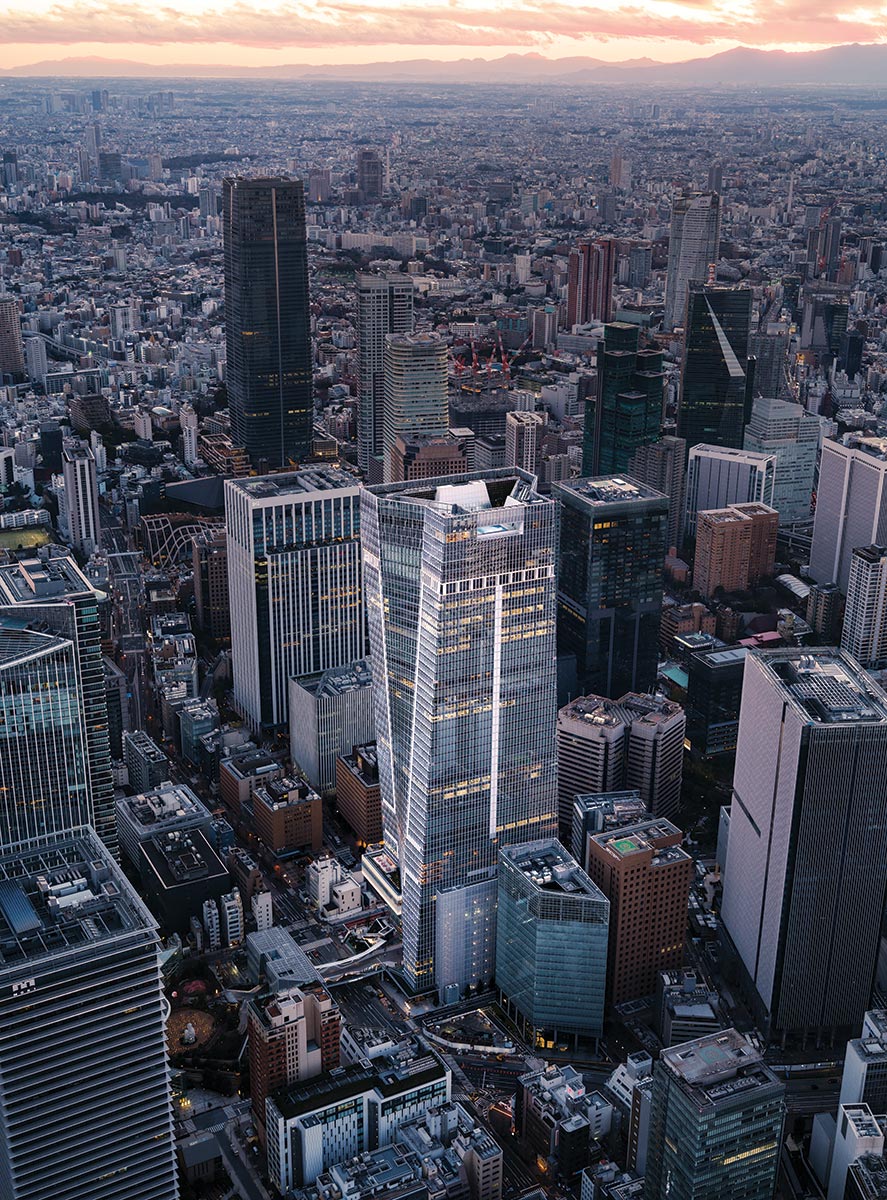
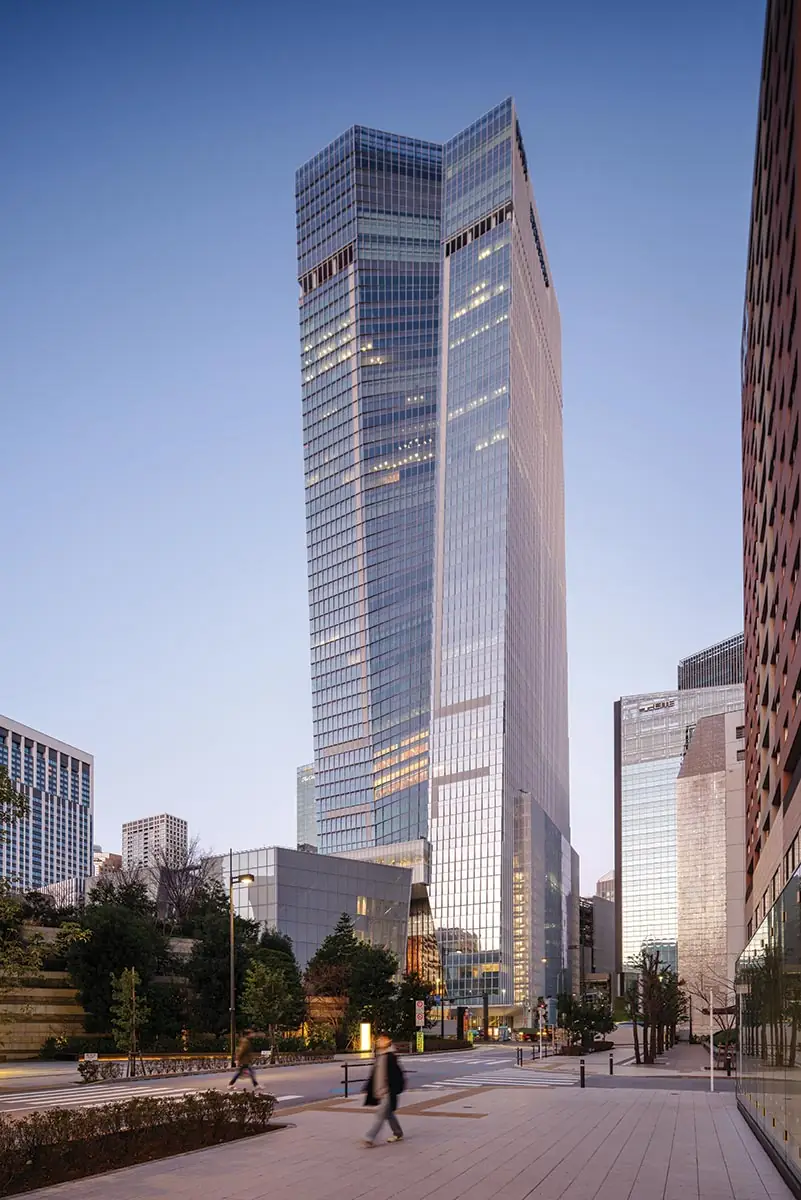
The tower appears to take on different forms from different angles. Photos © Jason O’Rear, click to enlarge.
The torquing Toranomon Hills Station Tower accommodates a rich variety of program in its 49 above-grade stories, and even more below grade—most notably a subway station. The structure is among the latest in a decades-long transformation of Toranomon Hills, and of nearby Azabudai Hills—where Pelli Clarke & Partners also just completed the Mori JP Tower, the tallest in Japan—into a business district.
The transformation comes at the hands of Mori Building, which famously earlier revamped neighborhoods such as the swanky Roppongi Hills in the Japanese capital. The family-owned real-estate giant has traditionally worked with firms like the late César Pelli’s, which are expert at skyscrapers, but in Toranomon Hills has broadened its portfolio of architects to include the likes of Christoph Ingenhoven (who designed a pair of plant-covered towers—one office, one residential) and OMA.
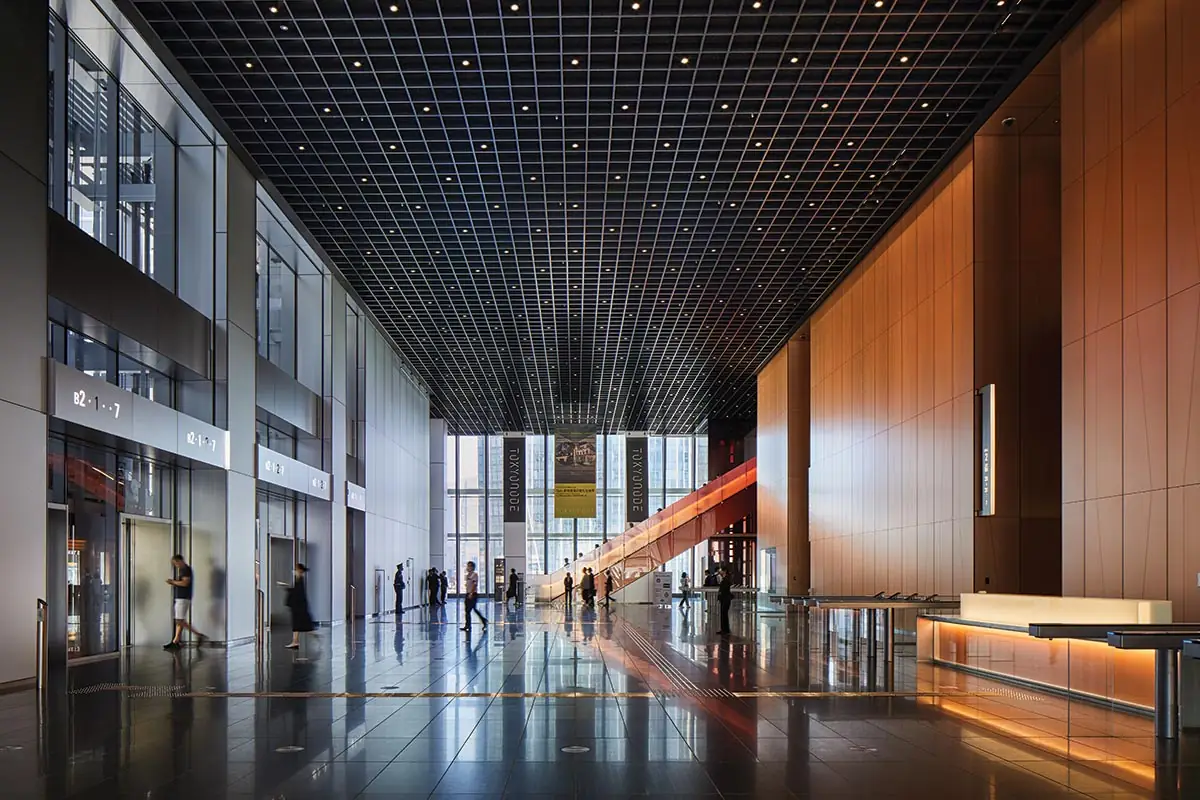
The sky lobby is located on the seventh floor. Photo © Tomoyuki Kusunose
The unconventional choice of OMA, selected in a 2015 competition, resulted in this unusual structure. It is the firm’s first ground-up building in Tokyo and, at just over 2.5 million square feet and 873 feet tall, OMA’s largest built work to date. (Shigematsu completed the 19-story Tenjin Business Center in his home city of Fukuoka, west of Tokyo, in 2021.)
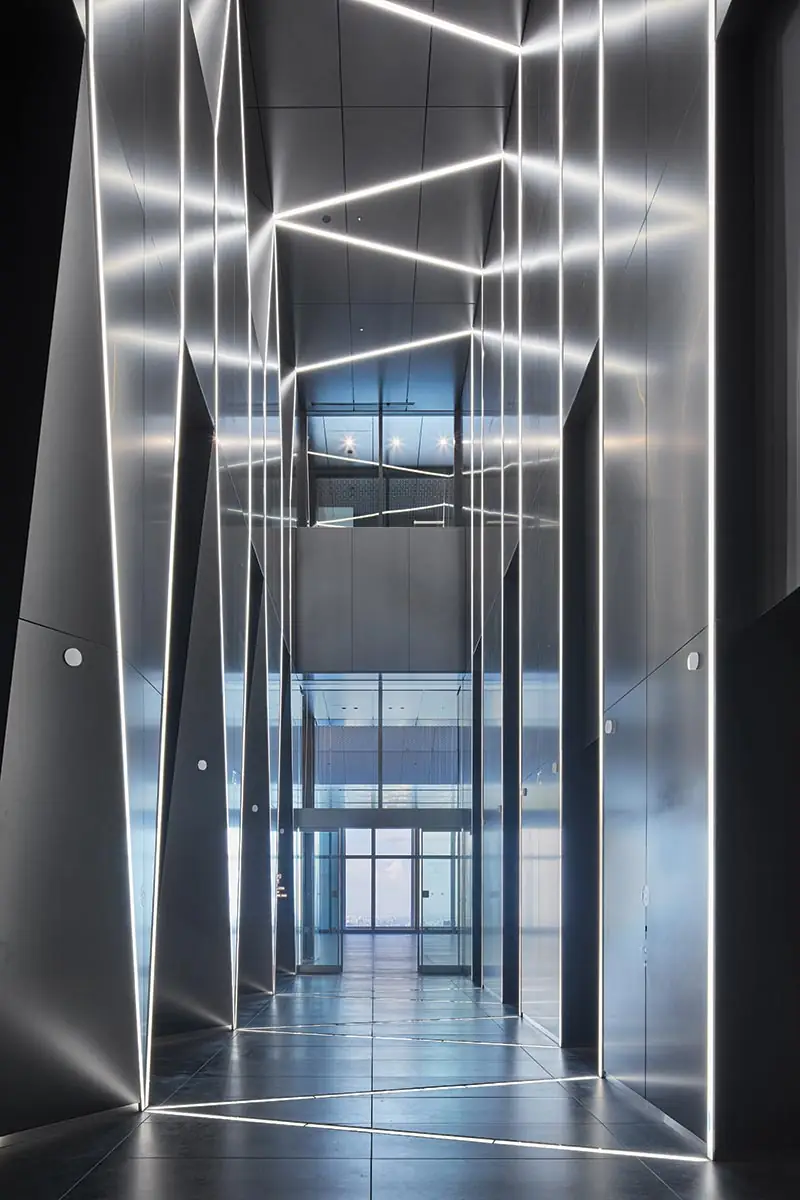
Elevator lobbies feature sleek lighting and metal finishes. Photo © Tomoyuki Kusunose
OMA’s Toranomon Hills building is the final piece of the nearly 20-acre development that previously contained small, aging structures in dense clusters. Positioned at the terminus of Shintora-dori Avenue, a thoroughfare connecting Tokyo Bay to the city center and what is now being called the city’s “Champs-Élysées”—in another Tokyo reference to the French capital—the tower serves as a gateway of sorts.
“We thought of the skyscraper as connective, not inward-looking,” says Shigematsu. At its base, a 50-foot-wide elevated pedestrian bridge, known as T-Deck, seemingly collides with the center of the tower, creating a rupture (and split structural and elevator cores) that pushes one side of the building forward—resulting in a 50-foot-long overhang—and the other back, with the middle contorting to accommodate the shifting planes. Despite the warping, the area remains the same on each floor throughout the building, and all of the 6-by-14½-foot IGU’s of the unitized curtain wall are straight.
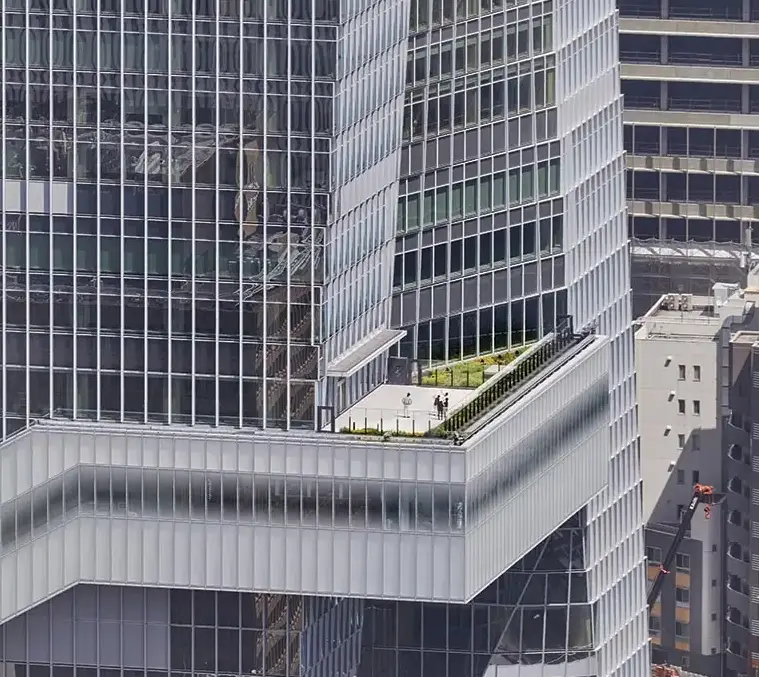
A faceted bridge just above street level (top of page) and a “sky bridge” farther up the tower (above) form part of the design. Photo © Tomoyuki Kusunose
Above T-Deck, a sky bridge that wraps a corner of the building’s facade acts as a marquee over the main entrance; its underside hosts a dynamic light installation by artist Leo Villareal. The soffit of the prefabricated T-Deck—which connects to a squat subway headhouse across the street, dubbed Glass Rock, and other nearby Mori buildings and art-filled public space—features origami-like folds of half inch–thick welded steel plates that are carried into the Station Tower’s expansive atrium.
The multilevel atrium welcomes a vast array of visitors to the building, including those heading below grade to the retail concourse and subway platforms of the new Toranomon Hills Station on the Hibiya Line and above as guests of the 205-key hotel (designed with a Scandinavian flavor by Space Copenhagen), patrons of Tokyo Node, a 108,000-square-foot voluminous art space on the uppermost levels, or office workers spread out over a million square feet within the middle floors. At the very top, an infinity pool and greenery-filled observation area, known as the Sky Garden, wow diners at the two restaurants located there. (Plantings also accentuate the highly variegated base at street level, on the opposite side of the building from T-Deck.)
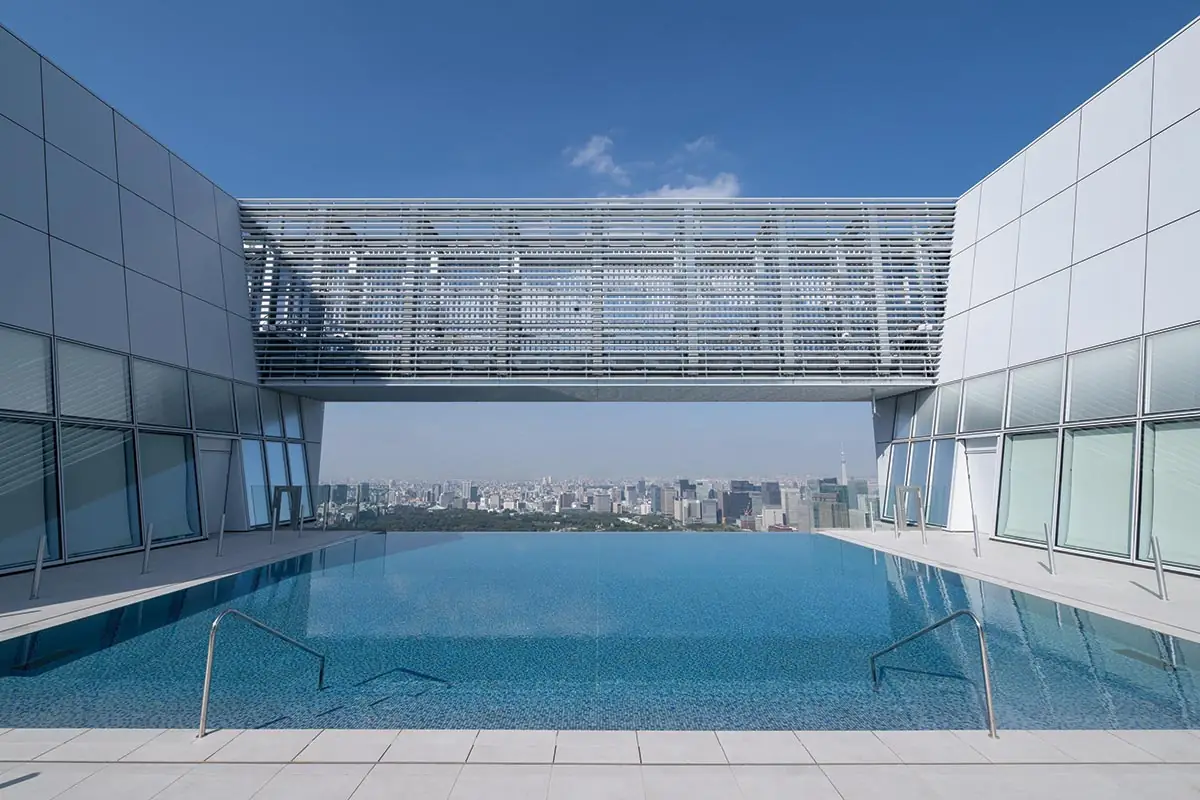
3
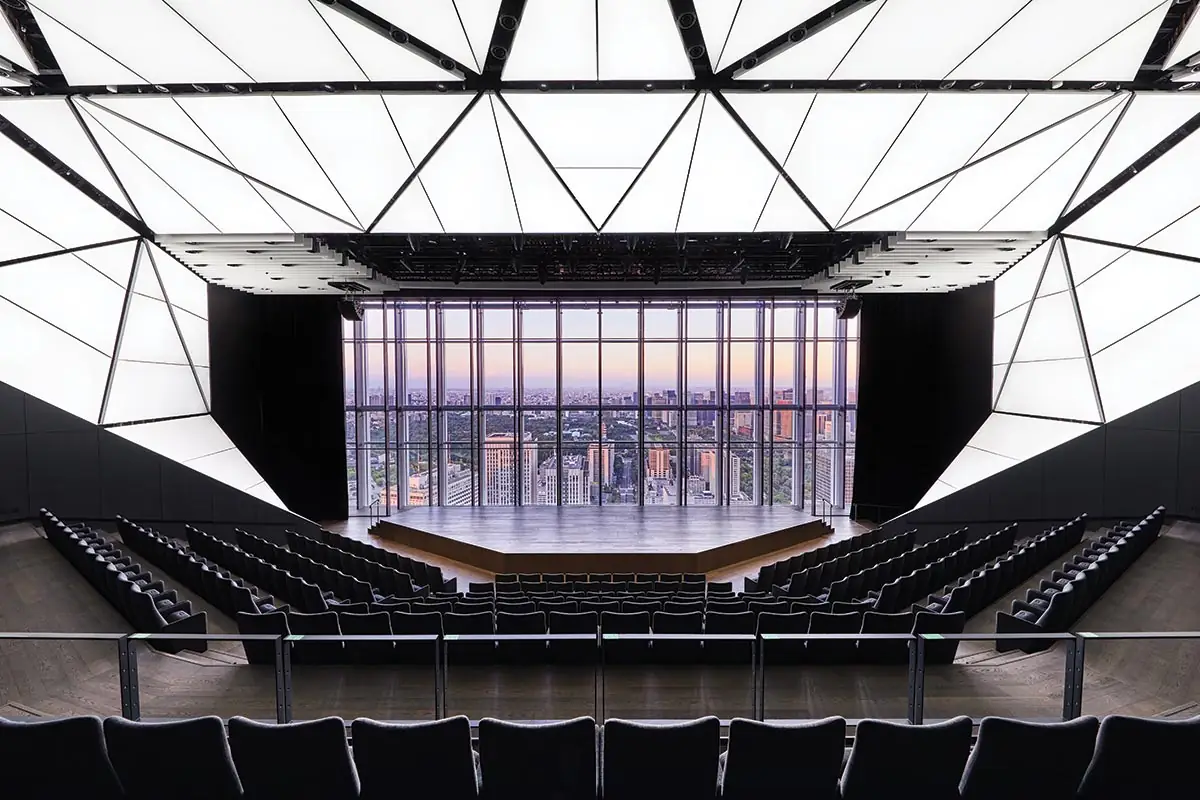
4
The sky garden’s infinity pool (3) and a top-floor conference center (4) offer arresting city views. Photos © Tomoyuki Kusunose
If, from a distance, the slanting structure gives the impression that it just wasn’t built right, that notion is quickly dismissed upon seeing the building up close. While OMA is not generally known for the impeccable execution of its projects, it’s apparently difficult to escape a certain attention to detail in Japan. The vibrant exterior, with its louvered facade, is matched inside, where there’s also a refinement that comes with recurring motifs—grated ceilings, sleek lighting, and color schemes that fade from intensely saturated to pale hues (particularly in the glass escalator panels throughout the atrium designed by Sabine Marcelis, a frequent OMA collaborator).
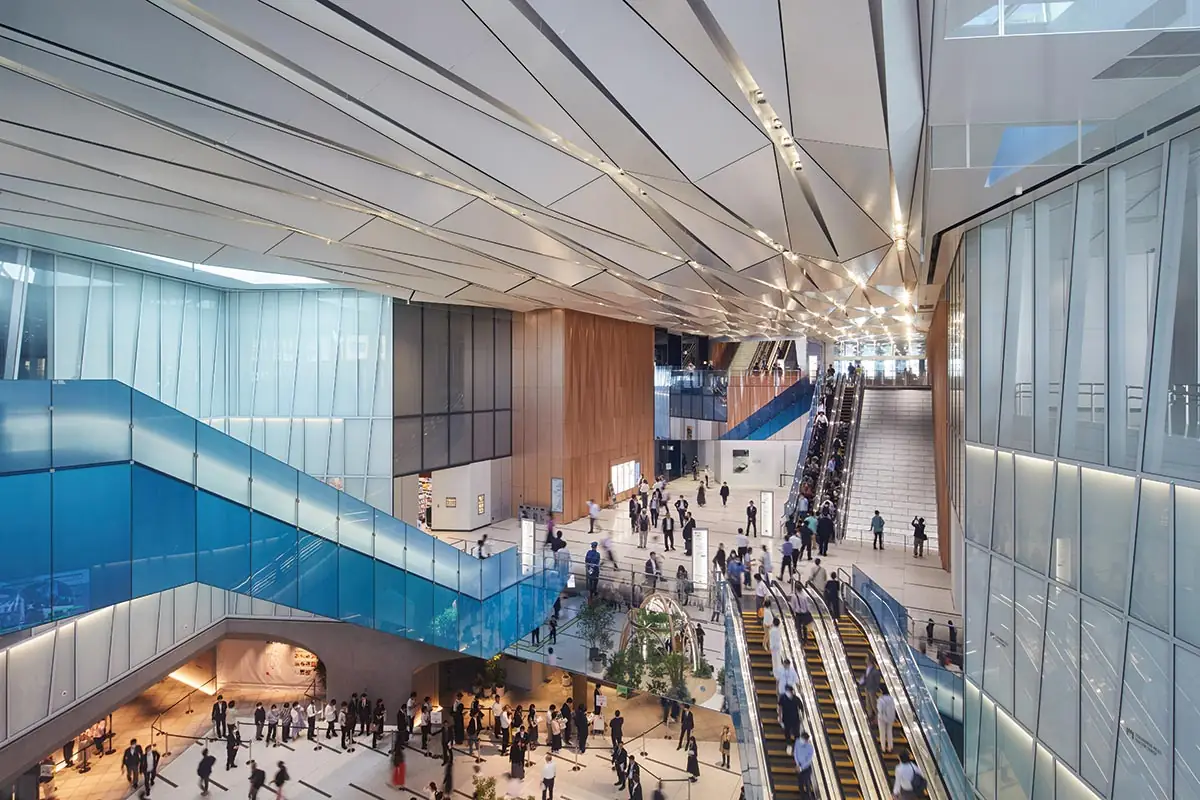
5
Origami-like ceiling panels and colorful glass along the escalators by Sabine Marcelis enliven the atrium (5 & 6). Photos © Tomoyuki Kusunose
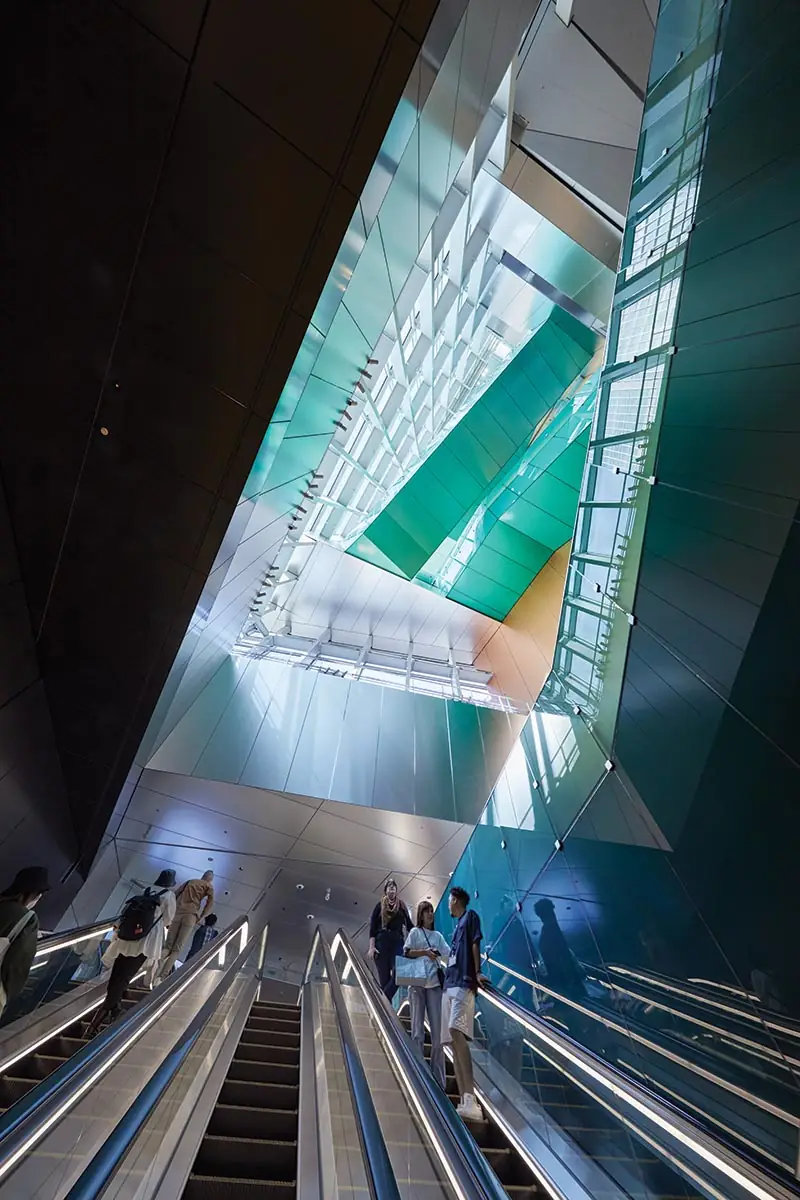
6
“For me, the focus was to create a highly public top and highly public bottom,” says Shigematsu. “The form is expressing the axis the building occupies, but it’s also creating a relationship to the context.” And if Shigematsu was less concerned about how his tower would transform the skyline, it still managed to achieve something most tall buildings in Tokyo do not—to stand out.
Click drawings to enlarge
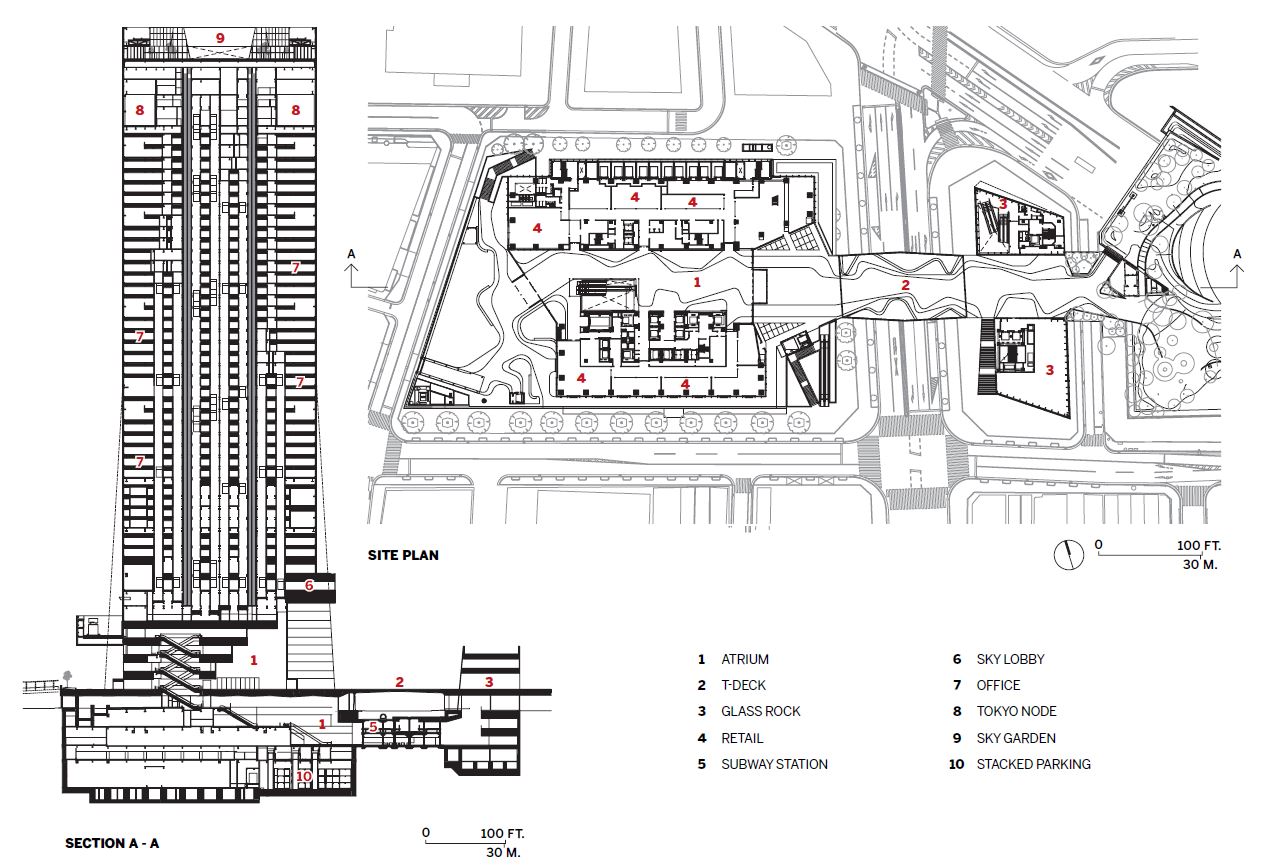
Credits
Architect:
OMA — Shohei Shigematsu, partner in charge; Takeshi Mitsuda, Jake Sadler-Foster, Luke Willis, associates
Executive Architect:
Mori Building
Engineers:
Kume Sekkei (structural, m/e/p, fire protection, facade); Arup (structural for competition, facade)
Consultants:
L’Observatoire International (exterior lighting); Arc Light Design (interior lighting); Ney & Partners (T-Deck)
General Contractor:
Kajima Corporation
Client:
Mori Building
Size:
2.55 million square feet
Cost:
$1.3 billion
Completion Date:
October 2023
Sources
Curtain Wall:
Showa Leadfu, YKK AP (aluminum); Asahi Building Wall (glass)
Entrances:
NABCO Systems





